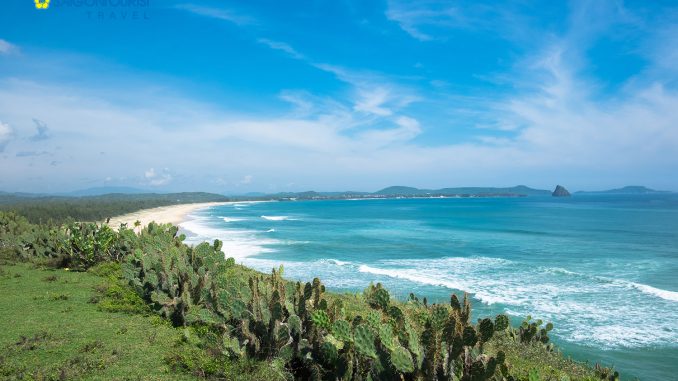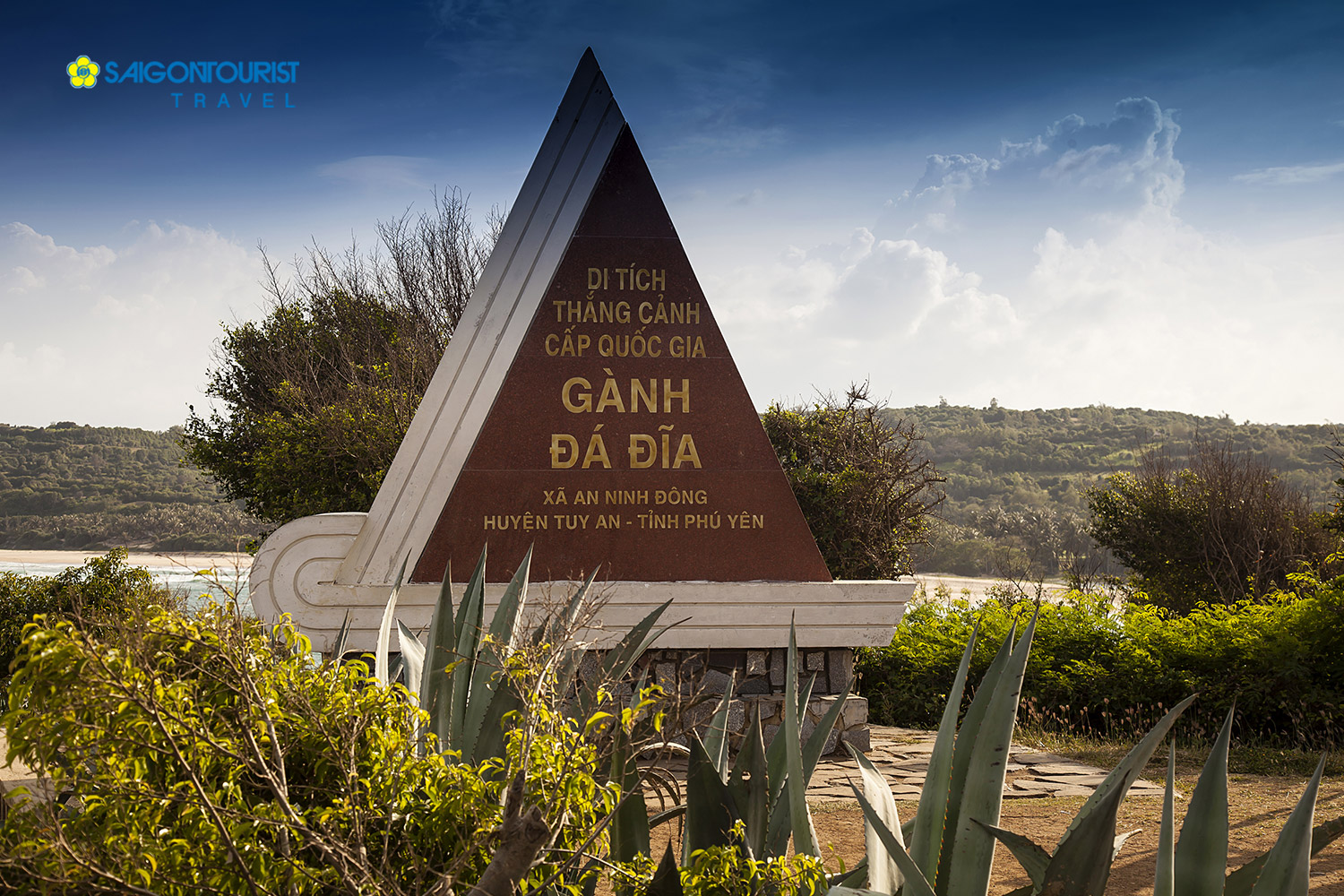
Millions of years ago, during volcano eruption, mineral flows melting will be frozen when they encounter water and then the solid breaks into columns orobliques. That created the beautiful landscape of Ghenh Da Dia for the present time. Time over time, the landscape is rearranged as an artistic work by the hand of nature. Ghenh Da Dia is about 1km2 large, half in the sea and a half above sea level.
Looking down on it, visitors often liken it to a gigantic beehive, others as a pile of stone plates. For despite a lengthy series of historical, archaeological and scientific probes of the cliff’s square kilometre, its formation remains a mystery.
The stones in Ghenh Da Dia are bazan stones of dark black and light yellow. There exists large stones of tons and small stones with different shapes: round, pentagon, polygon and so on. The stones take the right column or a settlement close to each other like disks arranged on couples together. Even counting the stone columns has failed to yield an exact figure as exhausted researchers usually call a halt at around 35,000. The stones are 60-80cm in visible height and 20-30cm across and cluster round a small freshwater pond that is fed by underground rivers and never dries up.

In Ghenh Da Dia, there only remains the unique scenery of the sea and stones, so everything is still primary, the environment is so pure, the air is fresh and comfortable.
Visiting Ghenh Da Dia, you have a chance to view many species of marine creatures, especially “Mứt” seaweed – a type of kelp which is salty and sticks to the stones, looking like a network.
Have been listed as a National Heritage Site by the Ministry of Culture and Information, Ghenh Da Dia is a potential tourist attraction to both domestic and foreign visitors. And a visit to the rapids, you will be certainly worth it…